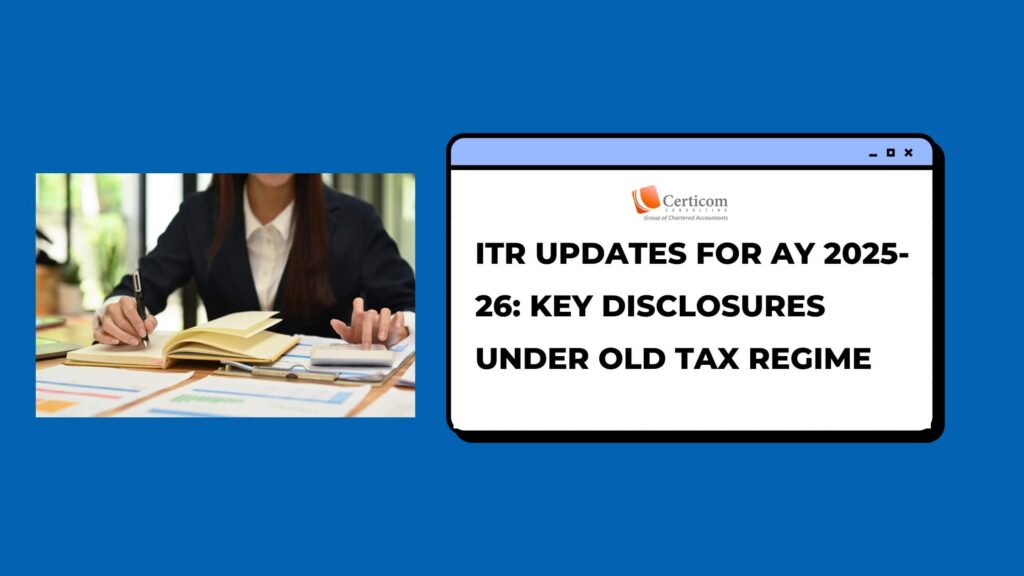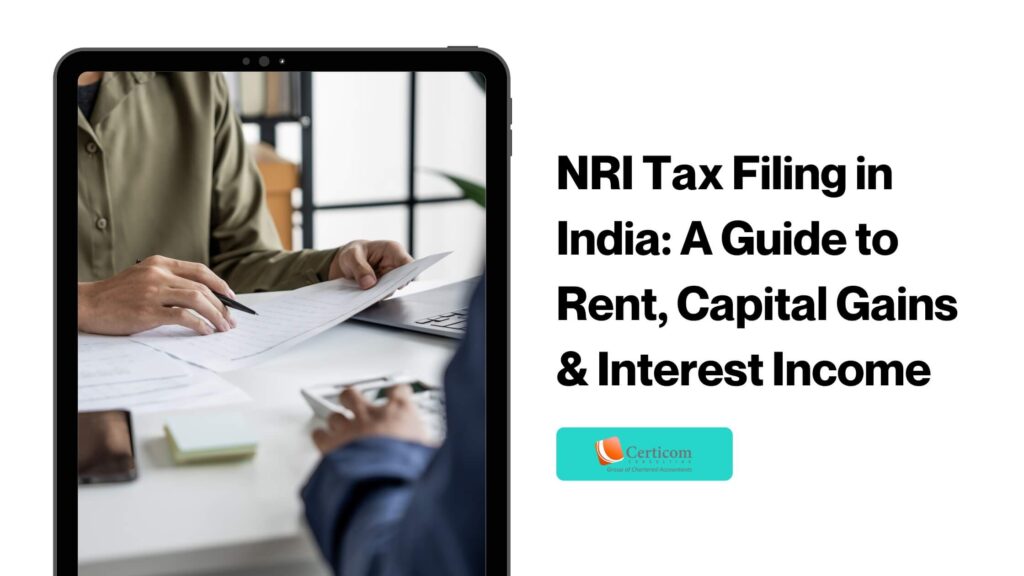ITR Updates for AY 2025-26: Key Disclosures Under Old Tax Regime

With the Income Tax Return (ITR) filing season for Assessment Year 2025–26 now underway, taxpayers opting for the old tax regime need to be aware of several key updates. The Income Tax Department has introduced enhanced disclosure requirements aimed at improving accuracy, transparency, and verification of claims made in returns.
ITR Utilities Now Available
On 29th June, the Income Tax Department released the ITR filing utilities for ITR-1 (Sahaj) and ITR-4 (Sugam). You can access them at the official income tax e-filing portal.
ITR-1 is for resident individuals (excluding those who are “not ordinarily resident”) with income up to ₹50 lakh from salary, one house property, interest, and long-term capital gains under Section 112A (up to ₹1.25 lakh). Certain exclusions apply—such as company directorships, foreign assets, or ESOP-related tax deferrals.
ITR-4 is for residents (individuals, HUFs, and firms other than LLPs) with income up to ₹50 lakh from business or profession under the presumptive taxation schemes (Sections 44AD, 44ADA, or 44AE).
Now, let’s dive into the new disclosures mandated under the old tax regime for AY 2025–26:

1. HRA Claim – More Details Required
To claim House Rent Allowance (HRA) exemption under Section 10(13A), you must now provide additional details to help authorities verify your claim:
Work City – Specify the city where you are employed. This determines whether the metro or non-metro HRA limits apply.
Actual HRA Received – State the HRA amount received from your employer.
Rent Paid – Mention the total rent paid during the year.
Basic Salary + Dearness Allowance – Provide this figure, as HRA exemption is calculated on a percentage of this.
City Classification – Confirm if your work city is a metro (e.g., Delhi, Mumbai, Kolkata, Chennai) or a non-metro, which impacts the exemption rate (50% for metro vs. 40% for non-metro).
2. Section 80C – Investment Identification Mandatory
Deductions under Section 80C—covering PPF, EPF, life insurance, ELSS, home loan principal, tuition fees, and more—now require you to furnish identifiable details:
Policy/Document Number – Each investment must be linked with a unique ID—such as a policy number, PPF account number, or ELSS folio number—to enable traceability and verification.
3. Section 80D – Health Insurance Disclosure
To claim deduction under Section 80D for health insurance premiums:
Insurer Name – Mention the full name of the insurance provider.
Policy Number – Provide the policy number or any relevant reference number linked to the plan.
4. Section 80E – Education Loan Disclosure
Interest on education loans is deductible under Section 80E, but now you must report the following:
Lender Name – The name of the bank or financial institution that sanctioned the loan.
Loan Account Number – The loan’s unique identifier.
Loan Sanction Date – When the loan was officially approved.
Original Loan Amount – Total principal sanctioned.
Outstanding Balance (as of March 31) – The remaining unpaid principal at the end of the financial year.
5. Sections 80EE / 80EEA – Home Loan Interest
For deductions under Section 80EE (first-time homebuyers) or Section 80EEA (affordable housing):
Loan Account Number
Sanction Date
Original Loan Amount
Outstanding Balance as on March 31
Lending Institution Name – Such as HDFC Ltd., LIC Housing Finance, etc.

6. Section 80DDB – Medical Treatment for Specified Diseases
To claim expenses under Section 80DDB, taxpayers must now clearly disclose the disease name:
Specified Disease – E.g., Cancer, Parkinson’s disease, Chronic Renal Failure, etc., as per the Income Tax Rules.
These new ITR disclosure norms reflect the Income Tax Department’s push towards greater compliance and data transparency. Taxpayers under the old tax regime must carefully gather and report all relevant details to avoid rejection of claims or future scrutiny.
Ensuring accurate reporting not only safeguards your deductions but also reduces the chances of notices and reassessments. It’s advisable to consult a tax advisor or CA to review your documentation before filing.
Related Post
Foreign Tax Credit in India: A Guide for NRIs
Top 10 Tax Filing Rules for FY 2024-25
Book A One To One Consultation Now For FREE
How can we help? *




